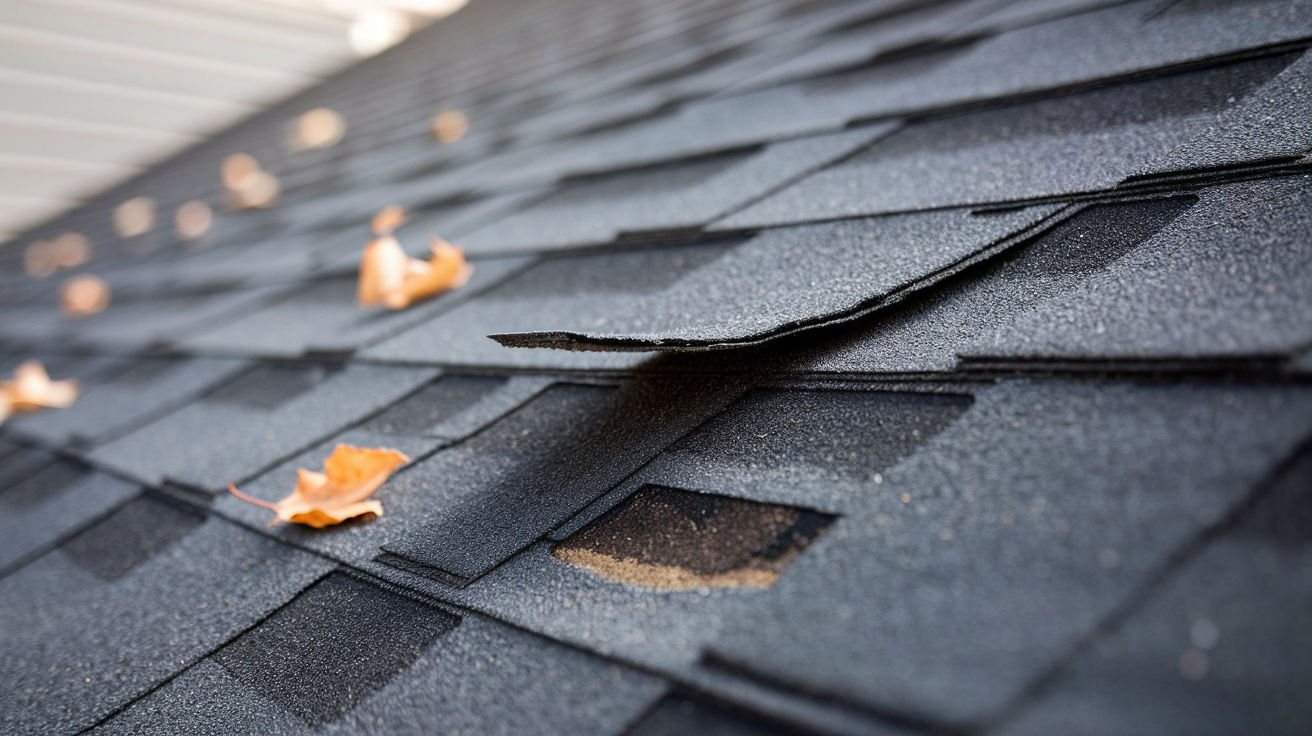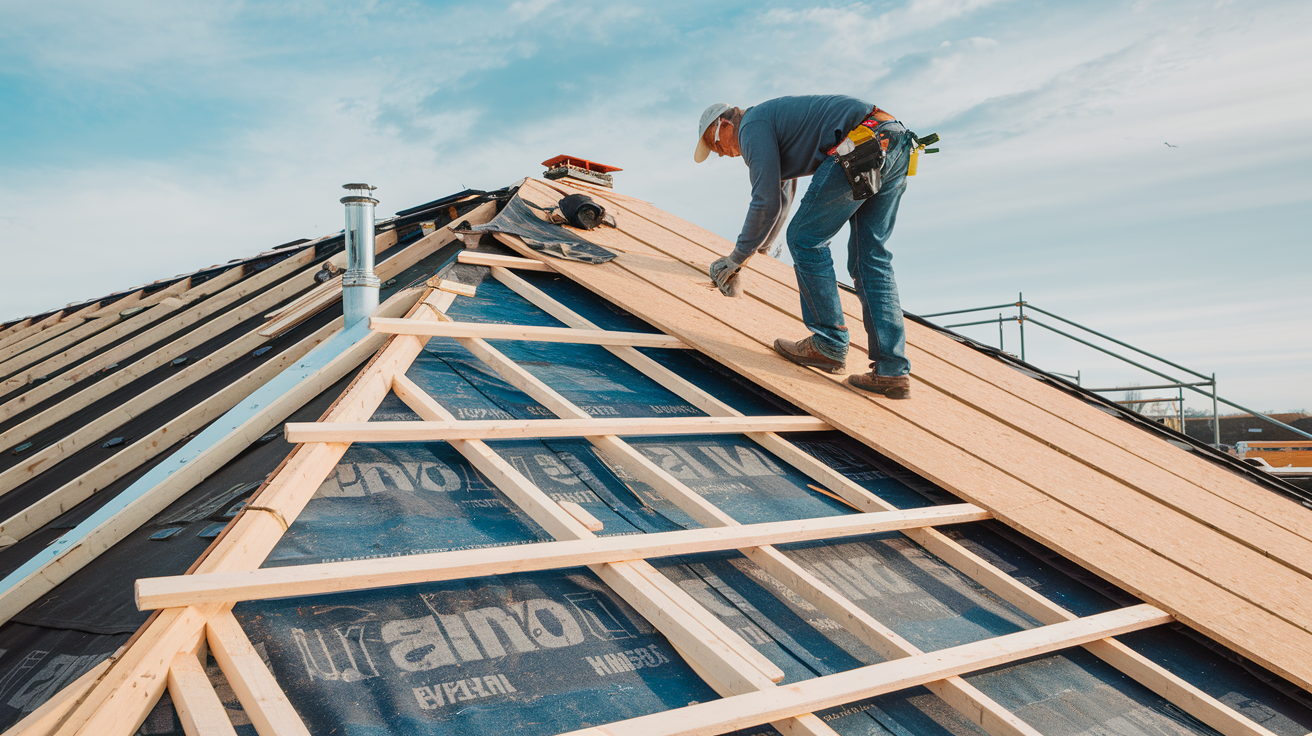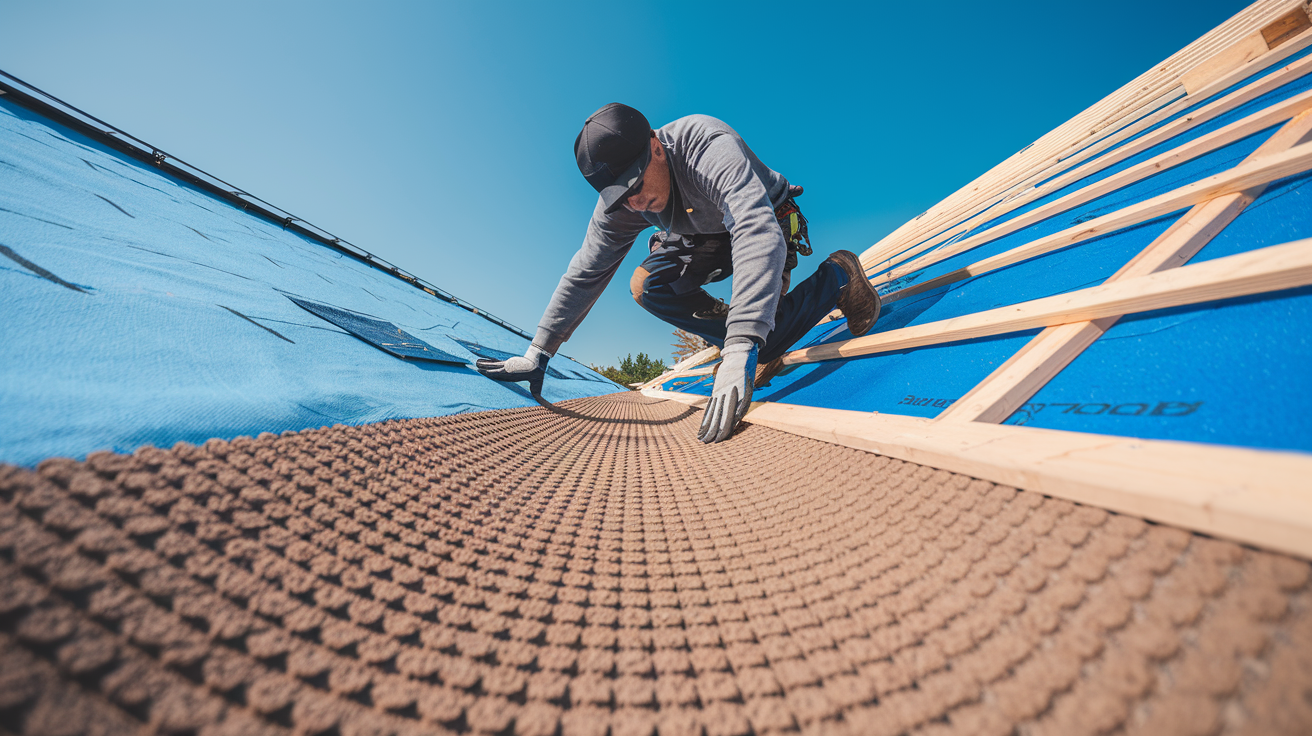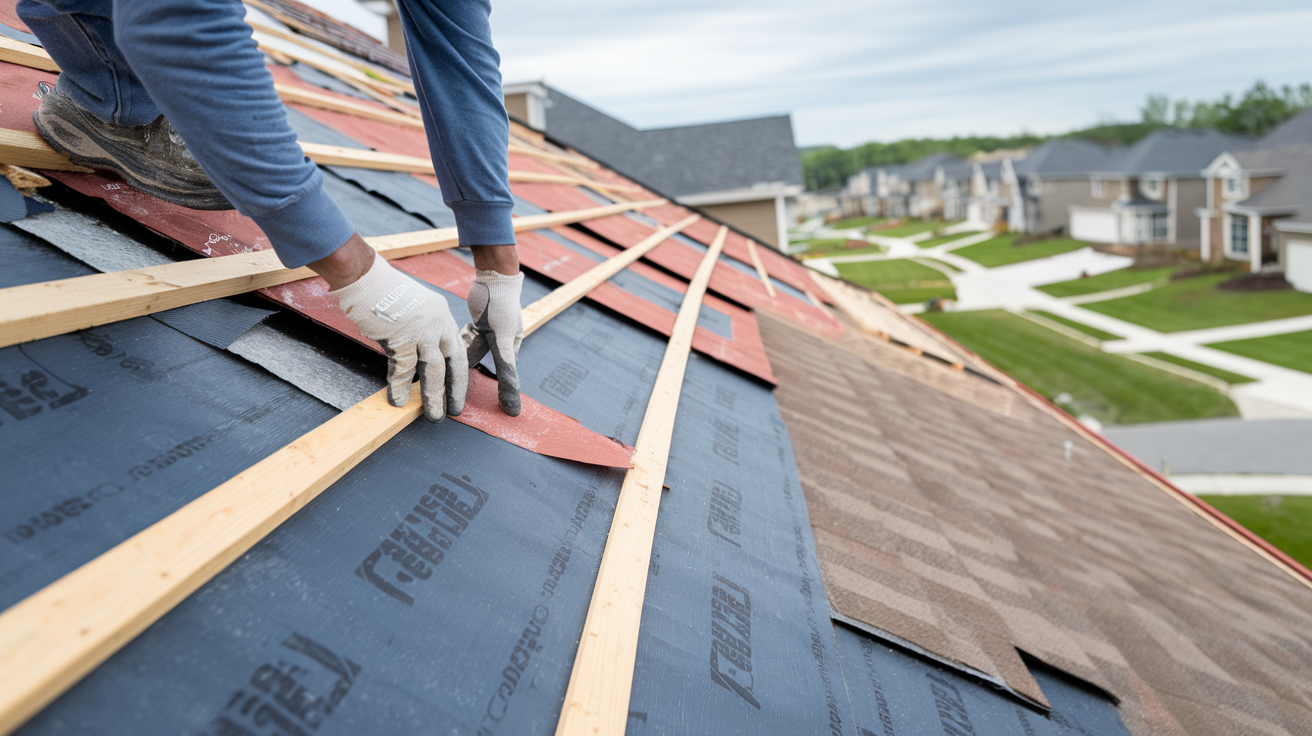Complete Guide to Roof Layers: From Decking to Shingles Explained
Is your roof ready for the next big storm? Many homeowners don't realize their roof is failing until water starts dripping into their living room. With the average roof replacement costing $8,000-$15,000, understanding your roofing system isn't just about maintenance – it's about protecting one of your biggest investments.
Your roof is more than just the shingles you see from the street. It's a complex system of layers working together to protect your home from rain, snow, and extreme temperatures. Each layer plays a crucial role, from the decking that provides structural support to the underlayment that prevents water damage. Understanding these components helps you make informed decisions about repairs and maintenance.
In this comprehensive guide, you'll discover:
- The essential layers of a roofing system and their specific functions
- How different materials compare in durability and cost
- Critical maintenance tips to extend your roof's lifespan
- Warning signs that indicate potential roofing problems
- Introduction to Roofing Systems
- Roof Decking
- Underlayment
- Ice and Water Shield
- Roof Covering
- Ventilation and Insulation
- Conclusion
Introduction to Roofing Systems
A roofing system is one of the most critical components of any home, providing protection from weather elements. A well-constructed roof also enhances curb appeal and improves energy efficiency. Homeowners are increasingly investing in quality roofing, with the demand for residential roofing projected to reach approximately $15 billion by 2027 (source: US residential roofing demand analysis, 2023). This includes both new roofs and replacements, underscoring the importance of a robust roofing system. Understanding the layers of a roof can aid in making informed decisions regarding installation, maintenance, and repairs. Consider obtaining a roof assessment to evaluate your specific roofing needs.

Importance of a Well-Structured Roofing System
A well-structured roof offers essential protection against adverse weather and potential damage. It ensures that all roof layers work cohesively, starting from the roof deck to the shingles (source: Residential roofing system components, 2023). This layered design helps prevent leaks and costly repairs. A properly installed roof extends its lifespan and minimizes maintenance needs, potentially increasing property value. Given the unpredictability of weather, investing in quality roofing materials and professional installation can yield long-term savings on repairs. A well-constructed roof can withstand strong winds and heavy snow. To learn more about roof maintenance and ensure the longevity of your roof, visit our comprehensive guide.
Overview of Roofing Layers
A typical roof comprises several layers, each serving a unique function. These layers collaborate to protect your home effectively.
Roof Decking
Roof decking is a fundamental component of any roofing system, serving as the foundation that supports the entire structure. It anchors shingles and other roofing materials, providing essential structural support (source: Roof Decking, foundational layer). A solid roof deck is crucial for preventing leaks and structural damage. This section explores different roof decking materials and their pros and cons. Understanding these aspects helps homeowners make informed decisions about their roofing systems. You can also Get Your Roof Assessment to understand your roof's current condition.
What is Roof Decking?
Roof decking, also known as sheathing, forms the structural base of your roof (source: Roof sheathing, structural base). It's a flat surface attached to the roof frame, providing a secure base for shingles and other roofing materials. This includes underlayment, a protective barrier between the deck and the shingles, that helps prevent leaks (source: Roof underlayment, protective barrier). Underlayment is installed on top of the roof decking, under the shingles, adding an extra layer of protection against water damage (source: Find out the best underlayment). Homeowners can choose from felt, synthetic, or rubberized asphalt underlayment, depending on their needs and budget (source: Underlayment types). The roof deck protects your home from the elements and strengthens the entire roofing system. It's the foundation for the rest of your roof, including the leak barrier, roof deck protection, and starter strips (source: Residential roofing system layers). A properly installed roof deck prevents moisture infiltration and extends the life of your roof. To learn more about roof maintenance, visit our comprehensive guide.

Types of Materials Used for Roof Decking
Homeowners typically choose between plywood and oriented strand board (OSB) for roof decking. Each material has unique characteristics affecting performance, cost, and durability. Climate compatibility is another factor to consider when selecting a material (source: Climate Compatibility).
- Plywood: Known for its ability to dry out after getting wet, plywood is a good choice for humid climates (source: Plywood dries out better). It typically costs more than OSB but offers better durability in wet conditions. This resistance to moisture makes it suitable for areas with frequent rain or snow.
- OSB (Oriented Strand Board): OSB is a cost-effective and strong option suitable for long spans (source: OSB cost efficiency). Its affordability and versatility make it increasingly popular for various roofing projects. OSB consists of wood strands bonded with resin, forming a solid panel. It can offer significant cost savings, especially for large roofs (source: OSB lowers cost).
Pros and Cons of Plywood vs. OSB
The best choice between plywood and OSB depends on your budget, climate, and specific roofing needs.
Importance of Proper Installation
Proper roof deck installation is vital for the entire roofing system's performance. Incorrect installation can cause leaks, structural problems, and shorten the roof's lifespan. For instance, improperly installing ice and water shield (a popular leak barrier also known as peel and stick) (source: Ice and Water Shield popularity) under the felt paper can reduce its effectiveness (source: Ice and water shield installation). The ice and water shield should be installed directly on the roof deck, followed by the felt paper (source: Ice and water shield installation). Secure fastening and adherence to local building codes are essential for preventing problems and costly repairs (source: Local building codes). Steep roofs (pitch ratio greater than 9:12) require extra safety measures during installation and maintenance, like scaffolding, due to the increased risk of falls (source: Steep roof maintenance). A pitch ratio is the roof's vertical rise compared to its horizontal run. Hiring a professional roofing contractor ensures correct installation and optimal performance over time.
Roof Underlayment
The roof underlayment goes on top of the decking. It protects the deck from moisture and damage (source: Roof underlayment guide, 2023). Common underlayment materials include felt, synthetic, and rubberized asphalt (source: Residential roof underlayment types, 2023). Each type has a different level of protection and cost. The best underlayment depends on the climate and how steep your roof is.

Leak Barriers and Starter Strips
Starter strips and leak barriers add extra protection against water and wind. They are especially important at the edges of the roof (source: Residential roofing system components, 2023). For example, ice and water shield is a leak barrier often used in valleys and eaves. These are areas where ice dams and water buildup are common (source: Ice and water shield installation, 2023). The ice and water shield should extend at least 24 inches up the roof from the interior wall (source: Ice and water shield installation guide).
Shingles or Tiles
The top layer of the roof is usually shingles or tiles. This layer protects the roof from the weather and enhances its appearance. Asphalt shingles are common because they are affordable and effective. Metal roofs are durable but generally more expensive (source: Roofing material comparison, 2023). Understanding these layers helps ensure your roof functions optimally and looks appealing.
Underlayment
This section discusses the crucial role of roof underlayment, the different types available, and factors influencing the best choice for your home. Understanding these aspects can help you make informed decisions about your roofing project. Consider getting a professional roof assessment to determine the best underlayment for your specific needs.
Role of Roofing Underlayment
Roof underlayment acts as a critical protective layer between the roof deck and the shingles. The roof deck provides structural support and anchors the shingles (source: Roof decking, 2023). The underlayment shields this deck from moisture, preventing damage and costly repairs (source: Roof underlayment is a crucial component, 2023).
Protection Against the Elements
Underlayment protects against various weather conditions, including:
- Rain
- Snow
- Ice dams
- Wind-driven rain
This added protection reduces the risk of leaks, especially during severe weather (source: Roof underlayment is a crucial component, 2023). It acts as a secondary barrier against leaks, even if the shingles are damaged. This is especially important in climates with heavy rainfall or snow, where it can significantly increase the roof's lifespan.
Types of Underlayment Materials
Homeowners typically choose from three main types of roofing underlayment (source: Felt, synthetic, and rubberized asphalt, 2023):
- Felt Underlayment: This traditional option, often called "tar paper" or "felt paper," is made of asphalt and natural fibers. It's generally the most affordable choice.
- Synthetic Underlayment: Made from polypropylene or polyethylene, synthetic underlayment offers greater tear resistance and durability than felt (source: Synthetic underlayment has a tough and durable construction, 2023).
- Rubberized Asphalt Underlayment: Modified with rubber polymers, this option provides superior waterproofing due to its self-sealing properties. It's highly effective in preventing leaks.
Each type has its own benefits and drawbacks, making it suitable for different situations and budgets. To learn more about roof maintenance and choose the right underlayment, consult our comprehensive guide.
Comparing Felt and Synthetic Underlayment
Felt and synthetic underlayment are popular choices with distinct characteristics. Understanding their differences helps homeowners make informed decisions.
Felt Underlayment: Advantages and Disadvantages
- Advantage: Felt is the most budget-friendly option, costing approximately $5.00 per square (100 square feet) (source: Synthetic underlayment costs, 2023).
- Disadvantages: Felt is less durable and more susceptible to tearing than synthetic options, especially during installation or in high winds. It is also more prone to moisture damage over time.
Synthetic Underlayment: Advantages and Disadvantages
- Advantages: Synthetic underlayment offers superior tear resistance and a longer lifespan. It's also lighter and easier to install, potentially reducing labor costs.
- Disadvantage: Synthetic underlayment is more expensive than felt, costing 50-100% more (between $7.50 and $10.00 per square) (source: Synthetic underlayment costs, 2023).
Choosing the Right Underlayment
Choosing the right underlayment depends on your climate and roof slope.
Climate Considerations
- High Humidity/Rainfall: Rubberized asphalt is ideal for wet climates due to its excellent waterproofing capabilities.
- Moderate Weather: Synthetic underlayment balances durability and cost-effectiveness in moderate conditions.
Roof Slope Considerations
Steep-slope roofs benefit from lightweight synthetic underlayment, reducing the risk of slippage during installation. For added protection in valleys and around chimneys, ice and water shield (a type of rubberized asphalt) is often recommended, regardless of the overall roof slope (source: Ice and water should be installed, 2023). Consulting a roofing professional is crucial for selecting the best underlayment for your specific needs. They can assess your roof and climate to recommend the optimal solution.
Ice and Water Shield
Purpose and Importance of Ice and Water Shield
Ice and Water Shield adds an extra layer of protection against water damage. This self-adhering membrane sticks directly to the roof deck without nails. It's especially helpful in places where ice dams form. Ice dams occur when snow melts and refreezes at the roof's edge, forcing water under the shingles. This can happen when sunlight warms the upper roof, melting snow, while the lower roof remains frozen. The melted snow then refreezes at the eaves, creating a dam (source: Ice dams form when warmth from the attic…, 2023). Ice and Water Shield prevents these leaks, protecting your roof from rot, mold, and insulation problems. It shields the roof deck (the wooden base) and other roofing layers. Its effectiveness and easy installation make it a popular choice among roofers (source: Ice and Water Shield has quickly become…, 2023). For a professional assessment of your roof's needs, consider our Get Your Roof Assessment.
Key Installation Areas: Eaves, Valleys, and Penetrations
Ice and Water Shield works best when installed strategically. Eaves, the lowest edges of your roof, are crucial because they're prone to ice dams and water buildup (source: Extend the shield at least 24 inches…, 2023). Ice dams often form on eaves because they are typically colder than the rest of the roof, particularly with poor attic ventilation. Valleys, where two roof slopes meet, are also important. Water flows down both slopes into the valley, increasing the risk of leaks. Roof penetrations, like chimneys, skylights, and vents, also need protection. Ice and Water Shield creates a watertight seal around these areas. Covering these key areas reduces the risk of water damage. You can learn more about roof maintenance to understand the importance of these preventative measures.

Best Practices for Installation and Overlap Requirements
Proper installation is key for Ice and Water Shield to work well. It goes directly onto the bare roof deck (the wood base) before any other roofing materials (source: Ice and water should be installed…, 2023). Then, felt paper covers the shield and continues up the roof. The shield should extend at least 24 inches past the interior wall line to prevent ice damming (source: Extend the shield at least 24 inches…, 2023). This extra coverage keeps water from reaching your interior walls. In colder climates with heavy snow, extending it further might be necessary. Each section of Ice and Water Shield should overlap the next by at least 6 inches for a seamless, waterproof barrier. This overlap, similar to how shingles are laid, prevents water from seeping through. Precise measurements and proper overlapping are essential. Following these best practices and local building codes (source: Local building codes should be consulted…, 2023) ensures a durable and reliable roof. Building codes guarantee your roof meets safety and performance standards specific to your region.
Roof Covering
This section discusses roof coverings, the outermost layer of your roofing system. It protects your home from the elements and plays a key role in energy efficiency and curb appeal. Choosing the right roof covering is essential for maximizing your roof's lifespan and protecting your investment.
Overview of Roof Covering Options
Homeowners can choose from a variety of roof covering materials. Each material has its own advantages and disadvantages in terms of cost, durability, and maintenance. Understanding these differences will help you make the best choice for your home.
Asphalt Shingles
Asphalt shingles are the most common roofing material in the United States due to their affordability and relatively easy installation (source: US residential roofing demand, 2023). The residential roofing market, which includes asphalt shingles, is projected to reach $15.2 billion by 2027, highlighting their continued popularity (source: US residential roofing demand, 2023). For homeowners seeking a budget-friendly and widely available option, asphalt shingles are a solid choice. To assess the condition of your current asphalt shingle roof, consider our Get Your Roof Assessment.
Metal Roofing
Metal roofing offers exceptional durability and longevity, often outlasting asphalt shingles by a significant margin. While metal roofs typically have a higher upfront cost, their long lifespan and resistance to harsh weather conditions, like high winds and hail, can make them a cost-effective choice in the long run (source: roofing performance characteristics, 2023). For more information on maintaining various roofing types, including metal, learn more about roof maintenance.
Tile Roofing
Tile roofing is known for its classic aesthetic and remarkable lifespan. Some tile roofs can last for 50 years or more, making them a worthwhile investment for homeowners seeking a long-term solution (source: roofing tile characteristics, 2023). Tile is also highly resistant to rot, insect damage, and fire. However, the weight of tile roofing requires a robust roof structure, which can add to the installation cost.
Types of Shingles and Their Characteristics
Asphalt shingles come in different types, each with its own unique properties. Choosing the right type depends on factors like your local climate and budget.
Fiberglass Shingles
Fiberglass shingles are a popular choice due to their lightweight nature and inherent fire resistance (source: roofing underlayment guide, 2023). This fire resistance can offer peace of mind and potentially lower your homeowner's insurance premiums.
Organic Shingles
Organic shingles are heavier than fiberglass shingles and offer better durability in cold climates, making them less susceptible to cracking in freezing temperatures (source: roofing underlayment guide, 2023). While they are less fire-resistant than fiberglass shingles, they remain a viable option for homeowners in colder regions.
Rubberized Asphalt Shingles
Rubberized asphalt shingles, also known as modified bitumen shingles, provide excellent waterproofing and flexibility. This makes them ideal for regions with frequent heavy rainfall or significant temperature fluctuations (source: roof underlayment types, 2023).
Comparing Shingles with Other Roof Coverings
When deciding on a roof covering, it's helpful to compare the strengths and weaknesses of different materials.
Shingles vs. Metal Roofing
Metal roofing typically lasts longer and offers better energy efficiency than asphalt shingles, potentially leading to lower energy bills (source: roofing performance characteristics, 2023). However, metal roofing has a higher initial cost. Homeowners should weigh the long-term benefits of metal against the upfront investment.
Shingles vs. Tile Roofing
Tile roofing boasts an exceptionally long lifespan and is highly resistant to rot and insect damage (source: roofing tile characteristics, 2023). However, its weight necessitates a strong roof structure, which can increase installation costs. While asphalt shingles are more affordable initially, tile's longevity can make it a more cost-effective choice over time.
Ventilation and Insulation
Proper ventilation and insulation are essential for a well-functioning and energy-efficient roofing system. They protect your roof's lifespan and help control your home's temperature. Without adequate ventilation, heat and moisture build up in the attic. This can lead to higher energy bills and damage to roofing materials (source: AZEK, 2023). Good insulation helps maintain comfortable indoor temperatures, reducing the strain on your heating and cooling systems. Together, ventilation and insulation prevent problems like ice dams and moisture buildup that can compromise your roof (source: AZEK, 2023). For a comprehensive overview of roof maintenance best practices, learn more about roof maintenance.
Importance of Proper Roof Ventilation
Proper roof ventilation is key to a healthy and energy-efficient home. It allows hot air and moisture to escape, protecting your roof deck and shingles. Without enough ventilation, attic heat can build up, causing shingles to prematurely age and increasing cooling costs (source: AZEK, 2023). Ventilation helps regulate attic temperature by letting hot air out, preventing shingle damage and potentially lowering energy bills in warmer months. Trapped attic moisture can lead to mold growth and even structural damage. Effective ventilation systems control temperature and moisture, ensuring a longer-lasting roof and better indoor air quality (source: AZEK, 2023). Schedule a Get Your Roof Assessment to determine the effectiveness of your current ventilation system.
Types of Ventilation Systems
Different ventilation systems address various roofing needs. Ridge vents, installed along the roof's peak, allow hot air to naturally escape. Soffit vents, located under the eaves, draw in cooler air, creating airflow through the attic (source: AZEK, 2023). The soffit vents bring in cooler air while ridge vents release warmer, moisture-filled air, creating natural circulation. Gable vents, installed in the attic's gable ends, offer additional ventilation. Gable vents often supplement soffit and ridge vents or are used when those options aren't suitable. Each system has benefits, and the best choice depends on your home's design and needs (source: AZEK, 2023). One effective combined system uses continuous soffit vents at the front and back of the house, paired with mushroom vents near the roof's peak (source: AZEK, 2023).
Role of Insulation in Preventing Ice Dams
Insulation is crucial for preventing ice dams, which can severely damage your roof. Ice dams form when warm attic air melts roof snow. This melted snow refreezes at the colder eaves, causing water backup and potential leaks (source: AZEK, 2023). Existing ice dams may require professional removal, sometimes involving removing roof snow or creating drainage channels. Proper insulation helps keep attic temperature consistent with outside temperatures, reducing snowmelt and ice dam formation. A well-insulated attic can prevent costly repairs and extend your roof's life (source: AZEK, 2023). While insulation is important, combining it with other preventative measures is often beneficial. These include proper ventilation and installing ice and water shield at the eaves and valleys. Ice and water shield should be applied directly to the roof deck, then covered with felt paper that extends up the roof (source: Homeowners).
Conclusion
First, let's summarize the key takeaways about roof systems and then offer some practical tips for keeping your roof in top shape.
Recap of Key Points
Understanding each layer of your roof is key to a long-lasting, effective roofing system. The roof decking is the base layer, anchoring the shingles and providing support (source: Roof Decking, 2023). This decking is usually made of wood panels, like plywood or oriented strand board (OSB) (source: Roof Sheathing, 2023). On top of the decking is the underlayment. This acts as a protective barrier between the deck and the shingles, guarding against water damage and harsh weather (source: Roof Underlayment, 2023). Underlayment options include felt, synthetic, and rubberized asphalt, allowing you to choose the best fit for your needs (source: Types of Roof Underlayment, 2023). Finally, the roofing material itself, such as asphalt shingles or metal roofing, impacts the roof's durability, cost, and appearance (source: Roofing Materials, 2023). Asphalt shingles offer a balance of cost and lifespan, while metal roofing is known for its longevity (source: Asphalt Shingles, 2023; Metal Roofing, 2023). All these layers, from the leak barrier to the starter strips, work together for a strong, weather-resistant roof (source: Roofing System Layers, 2023). A typical system includes a leak barrier like ice and water shield, underlayment for deck protection, and starter strips for the first row of sealant (source: Roofing System Layers, Ice and Water Shield, 2023). Consider getting a roof assessment to understand your roof's specific needs.
Tips for Maintaining a Healthy Roofing System
Regular maintenance is essential for a healthy roof. Here are some tips:
- Regular Inspections: Inspect your roof twice a year, in spring and fall. Look for missing or damaged shingles, leaks, and debris buildup. Early detection can prevent costly repairs. For example, a small leak can cause major damage if ignored.
- Gutter Maintenance: Clean your gutters regularly to prevent clogs, especially important for steep-slope roofs prone to debris runoff (source: Maintenance Challenges, 2023). Clogged gutters can damage the roof deck and fascia boards. Steeper roofs may need more frequent cleaning. Gutter guards can help minimize debris buildup. Learn more about roof maintenance to understand how proper gutter maintenance contributes to the overall health of your roof.
- Prompt Repairs: Fix small problems right away to prevent bigger, more expensive issues. Promptly repairing damaged shingles or leaks can extend your roof's life. A few missing shingles can quickly become a major problem if water gets in.
- Professional Help: Hire professionals for complex repairs, especially for steep roofs that might require scaffolding (source: Maintenance Challenges, 2023). They can ensure proper maintenance and safety. A professional can also advise on the best materials for your roof and climate.
By understanding your roofing system and maintaining it regularly, you can protect your home and investment for years to come.
Disclaimer: This blog post is intended for informational purposes only and should not be considered professional roofing advice. Always consult with qualified roofing contractors and insurance professionals for specific guidance regarding your individual circumstances.
